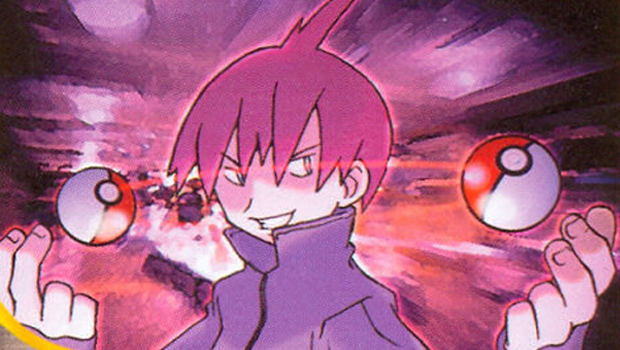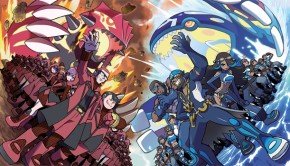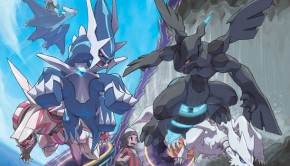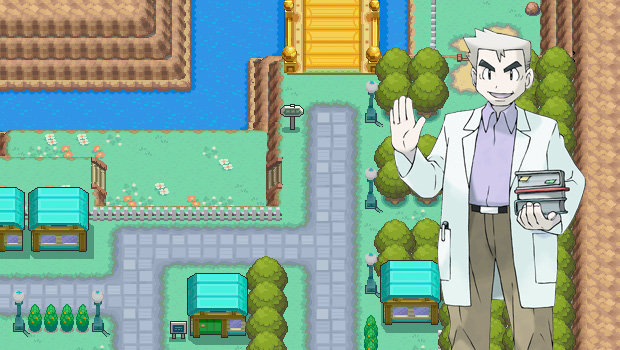Building a Foundation in Pokémon: Part One
Over the next few weeks, I’ll be bringing you a series of articles explaining what I believe are some of the core concepts that you can use when playing in the Pokémon Video Game Championships. While I’m relatively new to VGC, I’ve been able to transfer my knowledge from other games and get up to speed quickly. I’m hoping to help you do the same. Even you consider yourself an expert on VGC, I strongly encourage you to read my series anyway, as it might help you understand why your gut is telling you to make a certain play.
Leveling
The concept of leveling comes from poker, but is easily transferable to VGC as well. It mostly refers to how deep someone’s thought process goes and how, if you can figure out which level they’re on, it can make decision making easier. However, it’s not that simple, as players are generally somewhere in between, so it should be used as a tool and not a harsh guideline. Just know that most players consistently play the same way and will rarely deviate, at least not wildly. If you can get inside their head and figure out what their goals are, you can probably infer what they are going to do next.
For simplicity’s sake, let’s say that all beginners are on level 0. All they are concerned about is dealing the most amount of damage as possible with little or no regard to what you could possibly do to. You could Protect, switch in to a more favorable matchup (taking a resisted hit in the process), or knock their guy out before they knock out yours.
As players get more experience, they begin to think about what their opponent is going to do and react accordingly. If their best play is to Overheat your Mawile, you should probably Protect, which would be a level 1 play. However, if you know your opponent, fearing an Overheat, is going to Protect, you should look for your best option.
Welcome to level 2.
The tough part is figuring out what level your opponent is on. If you make a level 2 play on a level 0 player, it’s not going to end well for you. There is some information that can be extracted by asking your opponent how long they’ve been playing or by analyzing their team preview. The only thing you have to be wary of is making a prediction based on what you think is a new player or sub-par team, as some people can surprise you.
For the most part, your opponents are going to be on level 1, and it’s generally safest to operate under that assumption until they prove otherwise. You should probably play cautiously until you have a reason to deviate, as making a wrong prediction is the easiest way to lose momentum in a match. For example, if you put them on level 2 and are actually on level 0 or just make what would be considered a level 0 play, you are in deep trouble. Over-predicting is one of the easiest ways to give up any edge you may have had.
At the higher skill levels, you will find that most players are on level 2. They are generally better at predicting what their opponents are going to do and are able to make better plays as a result. What truly separates the good players from the great players is that great players are not afraid to make a risky play. That said, being able to distinguish the difference between making a risky prediction when you absolutely have to from the times when it’s too much of risk to do so is also the mark of great player.
Scenario #1
Your opponent’s Rotom-W threatens your Rotom-H, but you know they know that. Since they assume you’ll Protect (and for the sake of argument, we’ll say it’s 2v2 so you can’t switch), you have a feeling your Rotom-H is not going to be targeted this turn. You seize advantage of this opportunity and get off a critical Will-O-Wisp while your partner is double targeted but Protects.
One of the easiest ways to get an edge in VGC is by leveling your opponents. In order to get ahead of them, you can figure out what level they’re on and think on a level higher than them. This is one of the reasons that Protect is such a heavily used move in VGC. Using Protect could be an article all by itself, but I’ll try to sprinkle in the various uses through the series as I go.
If you feel like you are on the cusp of figuring out when to deviate from level 1 to level 2, but end up ignoring your gut and going with the safer play, you need to stop and re-evaluate your decisions. Getting through an eight round swiss tournament is difficult, and you will likely not make it by making safe plays.
One of the most dangerous things you can do is play on auto-pilot. I realize the timer does not allow you to take several minutes to think through your rationale and a lot of decisions have to be made with instinct. However, you can practice thinking during your opponent’s turn evaluating why they did what they did. Hopefully that will speed up the process on your turn.
You have to keep in mind that the concept of leveling is probably more applicable to singles since there are less options available to each player, making it easier to pin down what choice they’re going to make. As I said earlier, using leveling as a starting point instead of a hard guideline for VGC is probably your best bet.
Risk/Reward
Sometimes you’re 99% sure what your opponent is going to do, but it’s incorrect to act on it because it would be the wrong play, regardless of the outcome.
Scenario #2
I had an Amoonguss at full health and a +6 Azumarill at a quarter health against my opponent’s Ferrothorn with a sliver of health and a full health Rotom-W. Considering his Rotom-W was being distracted by my Rage Powder-ing, Black Sludge Amoonguss, I had no reason to go after Rotom-W — Ferrothorn was the “obvious” target. Ferrothorn Protecting seemed obvious so I attacked the Rotom-W and lost my Azumarill to a Power Whip.
I tried to be clever and got punished.
From his perspective, what’s the risk with attacking with Ferrothorn? If I Aqua Jet it and he Protects, he’s still in the same situation next turn. At least by attacking he gave me a chance to make a mistake and I did. The reward for the play I made was that I would feel good about myself for being clever. The risk I made was that I would give up my checkmate, my +6 Azumarill would faint, and I’d potentially lose.
When debating any play, make sure you consider the risk/reward. What you think is the best play might be a more dangerous version of a more obvious, but safer play.
Scenario #3
I played against Bearsfan092 on the Nugget Bridge stream a while ago, which you can find here. For game three, I lead with Kangaskhan and Azumarill against Rotom-W and Mega Tyranitar. In one of our earlier games, he Protected with Rotom-W when I tried to Fake Out it with Kangaskhan and I predicted he would do the same here.
However, I had a plan that would hedge against him switching up his plays. He knew my general team strategy was to set up Azumarill with Belly Drum, so it wouldn’t surprise me to see him go for the Thunderbolt immediately, especially considering how our earlier games played out.
Because I felt like it was a possibility for him to Thunderbolt Azumarill, I chose to Fake Out the Rotom-W even though it might Protect. Also, instead of trying to set up Belly Drum, I went to Play Rough the Tyranitar immediately which would put it in range of Aqua Jet. If he wanted to Dragon Dance, he would likely have to Protect next turn and/or eventually switch out.
My play went fine even though his Rotom-W Protected, except that Tyranitar used Rock Slide instead of Dragon Dance. I was fine with that too since it didn’t deal too much damage and I was about to be in a commanding position.
Then Azumarill flinched.
Scenario #4
How many times have you led with Kangaskhan and Rotom, only for them to double Protect on turn one in order to skip the Fake Out turn? It’s a little risky considering you’re now free to double target something on the second turn, but it might be a better alternative than taking damage from a Fake Out.
As the Kangaskhan player, have you ever thought about Power-Up Punching your own Rotom in those situations? Sure, it’s one of the riskiest plays you can probably make in VGC, but the rewards are certainly there. I wouldn’t do it in every situation, but especially in best-of-three (or against the Charizard-Y/Venusaur lead, which will often double Protect on turn one in order for Venusaur to get the Chlorophyll speed boost on turn two), this might be something you could incorporate into your game.
Playing to Your Outs
Sometimes you’re trapped and the only way you can win is by double Protecting or maybe by double targeting when it’s super obvious but it’s your only way out. In those cases, playing to your outs is much better than accepting defeat. You won’t be able to capitalize on it a lot, but another mark of a great player is one who is able to turn around an almost impossibly lost cause into a potential victory.
My opponent in scenario #2 did this very well. He knew he wasn’t going to win unless he gave me the opportunity to make a mistake. If he Protected when I expected him to, I knew he most likely wasn’t going to get the second Protect and therefore would be free to attack. By taking away the transparency that would be there on later turns, he made it easier for me to make a mistake.
A common situation in VGC is having a Pokémon on your team like Ferrothorn (or something similar, like Substitute/Leftovers Aegislash) while they have Talonflame and three Pokémon that get walled by Ferrothorn. In that situation, KOing Talonflame and winning with Ferrothorn could be pretty easy. If they are conserving their Talonflame well, it might be best change gears and just play a normal game. Identifying your win condition is great, but only if that’s how the game is actually going to play out. Be careful of creating a false narrative just because it seems so easy in theory. After all, it’s your opponent’s job to not make it easy for you.
Scenario #5
I played a game a while ago where I was in a tricky situation. I had Charizard-Y alongside something else, but the something else wasn’t great and my opponent had the rain up from his Politoed. The specifics are a bit muddled, but I remember thinking, “This is a tough spot. What does the board need to look like in order for me to win this game?” Conventional means were clearly not going to win me the game, so I needed to find the answer and then figure out how to get there.
The answer involved me having Amoonguss alongside Charizard-Y with the sun up. Through some crazy Protects and switches, I was eventually able to make it happen. Thankfully, my opponent wasn’t trying to stop me from setting up the perfect end game because he was blind to that option. Instead, he was focusing on the game that was in front of him, and not the game I was trying create. Sometimes, identifying your win condition is equally as important as identifying theirs and trying to stop it.
A lot of this could be boiled down to “focus on what matters.” Leveling your opponents is great, as is sweeping their entire team with a Ferrothorn, but is that the best route to go with once you consider everything? Awkwardly enough, what matters tends to change turn to turn, and the timer doesn’t make it any easier on you. It’s important to have a game plan, but you must remain flexible and that requires a lot of quick thinking.
Scenario #6
In another one of my games against Bearsfan092, I found myself in a difficult position. He had Scizor and Salamence plus another Pokemon in the back vs my Azumarill with a sliver of HP and Garchomp. Both of his Pokémon pinned mine, so the only option I had was Protect Azumarill from Scizor’s Bullet Punch and Dragon Claw his Salamence, hoping to dodge his Draco Meteor.
It worked! However, I wasn’t out of the woods yet. Since I was Intimidated, Salamence didn’t get OHKOed, and I was in the same spot I was on the turn before, except this time I needed a double Protect with Azumarill and another Draco Meteor miss.
It didn’t work out, but it would 3.3% of the time. Are you willing to concede 3% of your games rather than play them out?
Scenario #7
You’re playing for top cut of a Regionals and you’re down 4-2. That said, you’re actually in pretty good shape. You’ve got a Salamence that’s burned (and taken damage once) and an Aegislash with a Substitute up against his Amoonguss with half health and Salamence (with a quarter health Rotom-W and Aegislash in the back). His Salamence is Choice Scarfed, but you’ve got a Haban Berry and Roost on your Salamence! You can easily tank a hit from Draco Meteor and heal it back with Roost while he drops to -2 special attack.
If this game goes on for a long time, you’re in a fine position to outlast your opponent and whittle him down.
Unfortunately, the timer is at under four minutes and the clock is ticking. To add insult to injury, some of your opponent’s Pokémon are shiny, wasting even more precious time off the clock any time they switch in. Your new enemy is the timer and the only way to beat it is to start KOing your opponent’s guys and quickly.
Your opponent is likely going to Rage Powder with Amoonguss and Draco Meteor your Salamence since he doesn’t know the particulars about your Salamence. If you don’t Roost this turn and his Salamence doesn’t faint, he will likely KO you with another Draco Meteor before you get to Roost. That would leave you at a 3-1 disadvantage and you probably wouldn’t be able to beat the timer.
So what’s your out here?
Is it totally unreasonable for your opponent to switch out Amoonguss on this turn and heal with Regenerator? He’s got to be thinking that his Salamence is faster than yours and will get the OHKO. Aegislash won’t be able to OHKO Salamence this turn, but it would likely KO Amoonguss from where it’s at. Also, switching and making use of Regenerator is probably going to burn off some valuable clock time, which would be great for your opponent.
Again, creating a false narrative is dangerous, as it can lead you down a dangerous path. However, I think you lose to time if you Roost and you lose to time if his Amoonguss stays in and Rage Powders, so I think assuming the Amoonguss will switch out gives you the highest chance of victory. It’s a slim chance, but it’s one you have to take.
***
This is currently slated to be a four part series, so make sure you check out the others. If I’m taking too long to put the next one up, feel free to bug me on Twitter!
40 Responses to Building a Foundation in Pokémon: Part One
Leave a Reply
You must be logged in to post a comment.











Awesome article. This covers a lot of the more abstract concepts that occur in battle and should serve as sound advice for beginners and veterans alike. I particularly like how you describe playing to an opponents level. I think most of us know and love the feeling of making a great, decisive play against a quality opponent. Conversely, losing matches on a poor play due to over predicting or not making the safer play is equally dreadful. Can’t wait for the next article!
I have a question Thage…
Did Magic players, in the early years (it is still there now, but I didn’t see it as very prevalent), have the same resistance to these thoughts as we are seeing in the comments here? I mean the whole “this is obvious” “only experience matters” “you are overthinking things” type of complaint?
Good read. A lot of new players are often stick to their plans without analysis and predict the opponents and hope for the best. The decide with guts is probably last thing I can do because it’s probably lead you to lost the games.
You need to take a risks to advance in battle if you are in worst position where you can’t play safe. If you want to make topcut, you have to do few of them.
For example: I have a battle against Unreality in NBM topcut.
My Scrafty/Mamoswine vs His Mega Kangaskhan/Azumarill.
I was in worst position. My goal was stop Azumarill (used Sitrus berry in few last turns) set up belly drum with fake support. Scrafty switch out for Rotom and Mamoswine used EQ/protect would be obvious for Unreality which I don’t want. I have to take a biggest risk, Scrafty used stone edge on Azumarill while his Mega Kangaskhan fake out on Mamoswine. It was paid off and won the game.
If they got overpredicted or outplayed, they should not complain about it. Just accept it, learn the mistakes and move on.
I’m really grateful for this article. It has been something that I have overlooked in my reflecting and has been a crucial part of helping myself become a better player. I’ll be looking forward to the rest of your articles in this series and would like to express my thanks for this good read. Thank you.
Their tendencies vs me are probably relegated to to my subconscious. For teams that I’ve played a lot with, I could probably tell you where my opponent thinks the game is and/or where or it’s going, but I’m not sure I could explain how or why I feel that way aside from having plenty of repetitions under my belt.
It’s certainly an interesting topic, but not one I’m experience enough to cover yet.
I really like how they break down the thought process. I personally defend myself with more higher level thinking in mind, but I prefer simpler offensive choices. Not in the sense of “I don’t play smart ever”, but in the sense of “If I can force the opponent into a corner, I can make simpler, safer plays without OHKO worries”. It’s always best to be able to make simpler plays because they’re optimal regardless, not because you don’t know how to make deeper ones. It helps with that one part: “Over-predicting is one of the easiest ways to give up any edge you may have had.”. It’s one of my main problems.
The whole thing is really well written and explores how to think when playing the game. If there’s one thing I hope this guy covers, it’s this: When to sack a pokemon. Understanding this can lead to a solid increase in games won if you have issues with “letting go”. Sometimes, it’s just not worth losing more than half your health on the switch just to preserve a poke that isn’t getting much done anymore. It’s important to know when to make that tough call, and how, imo.
This is one of the best articles I’ve read. I’ll definitely link this to people who are thinking of going to Regionals as it explains the thought process that I go through in each battle in a much better way than I can!
I really enjoyed reading the article Thage, glad to see this up, but I do think it’s impossible to do a full review that is reader friendly due to some luck due to decision making and what type of opponent you may be matched with as you mentioned with levelling. Out of curiousity, what other competative turn games have you played before VGC because an insight and guide thats user friendly and detailed like this from a recent player seems that it would be written with past experience.
I think that due to what pokemon is on the surface being more like poker than something such as a TCG or chess, where there is more of a gameplan and structure to how the game is played by everyone, a lot of players can easily be drawn into the trap of what you posted. Also, I feel that playing other games, not to bash Pokemon, helps vastly with my game (even though I’m not top tier) certainly in the strategy aspect. I’ve played a lot of luckless games, and I’ve seen how I look at the game transform from one that is turn by turn to a long term and more materialistic view. I have had to learn toe poker aspect of it more though.
Give other games completely different to this a go. As repetative as chess can get with too much play, a bit of in depth analysis on yourself and with guides can really teach alot and give a different insight on this game, I personally feel thats helped me.
I know that, following prompting by Thage, you gave an explenation to your complaint. But I think that your approach is just bad sportsmanship. No matter how good you are at the game, if you don’t have the sportsmanship or the social skills to explain why someone else is wrong in a way that everyone is happy about, it’s best not to say anything at all and leave the critisizm to someone else.
A good read, and I’m interested to see the other 3 instalments! There was a lot solid advice here, and scenario 7 is probably the best thing to see out in the open.
I feel like the only thing that wasn’t covered here is the analysis of board position where after deliberation, you can say “No matter what he does this turn, this move can only have a positive result for me.” Examples would be your scenario 2 and 6. Scenario 2 in that one player tried to be clever, while another just made the best play possible to try and win. In scenario 6, the situation is dumbed down a bit, but they chose to Draco Meteor and Bullet Punch because why would they do anything else?
I’d even argue that thought process works outside of levelling. One of the biggest mistakes I made when getting into the game is the dangerous overpredict, and the desire to be clever. But when you fail to recognize your own board position isn’t threatening your opponent, they’ll make moves that function regardless of your potential thought process. These situations are the ones that often lead to switches, and changes in momentum as your opponent decides on the safe strategy while you have to scramble and create a threat for them to respond to.
When failing to recognize these positions, what can appear to you as someone making a play that doesn’t match their level of thinking, is actually just a strong thinker recognizing that nothing bad can come from using moves X and Y.
Looking forward to the next articles!
Shiny pokemon as a meta game tactic? whoa…